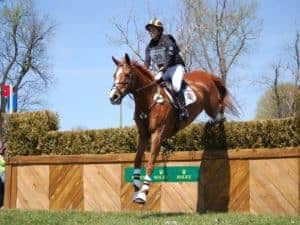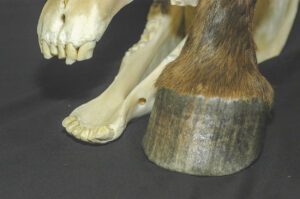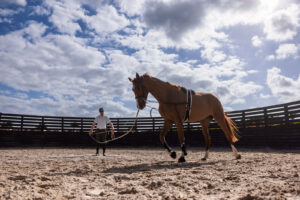Limitations and Advances in Lameness Assessment

During the American Association of Equine Practitioners’ Focus on the Sport Horse program, held July 20-22, in Louisville, Kentucky, Hilary Clayton, BVMS, PhD, MRCVS, Dipl. ACVSMR, McPhail Dressage Chair Emerita at Michigan State University and president of Sport Horse Science, in Mason, Michigan, discussed the human eye’s limitations and described up-and-coming inertial sensor systems’ usefulness for detecting lameness.
When veterinarians observe horses’ movement at the trot, speed affects what they see. “Lameness appears to decrease at faster trotting speeds,” Clayton said. “But, in fact, the lameness doesn’t change—it’s just that our eyes can’t see it as well when the horse trots faster.”
Thus, she recommended that veterinarians evaluate horses—particularly those with subtle lameness—at a slow and consistent trot
Create a free account with TheHorse.com to view this content.
TheHorse.com is home to thousands of free articles about horse health care. In order to access some of our exclusive free content, you must be signed into TheHorse.com.
Start your free account today!
Already have an account?
and continue reading.

Related Articles
Stay on top of the most recent Horse Health news with

















